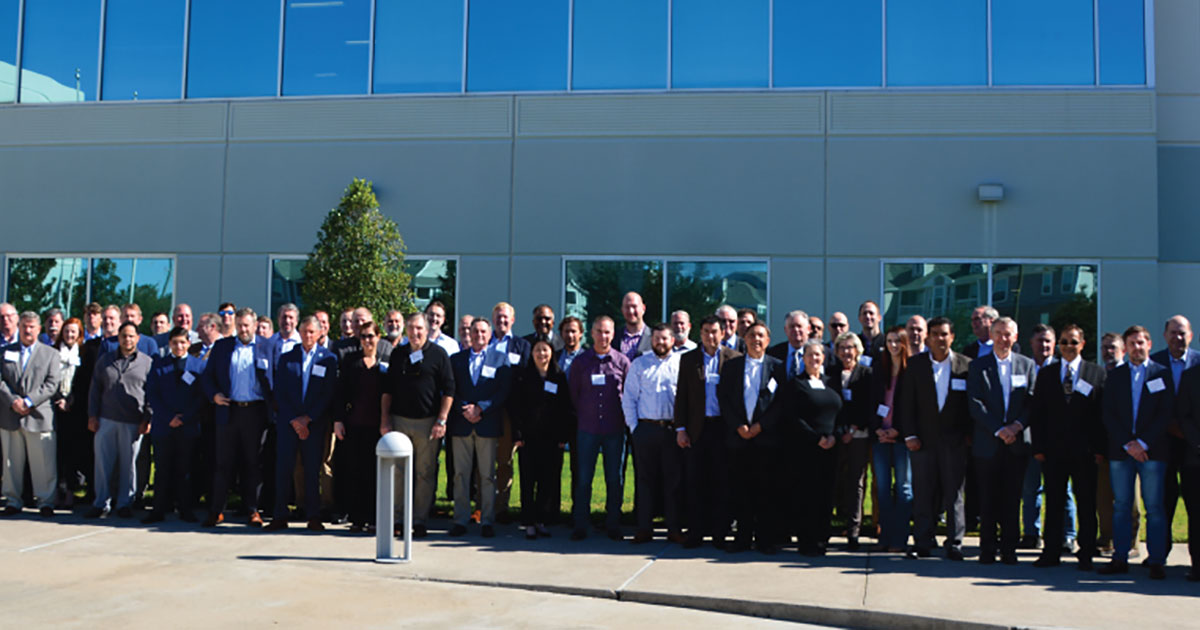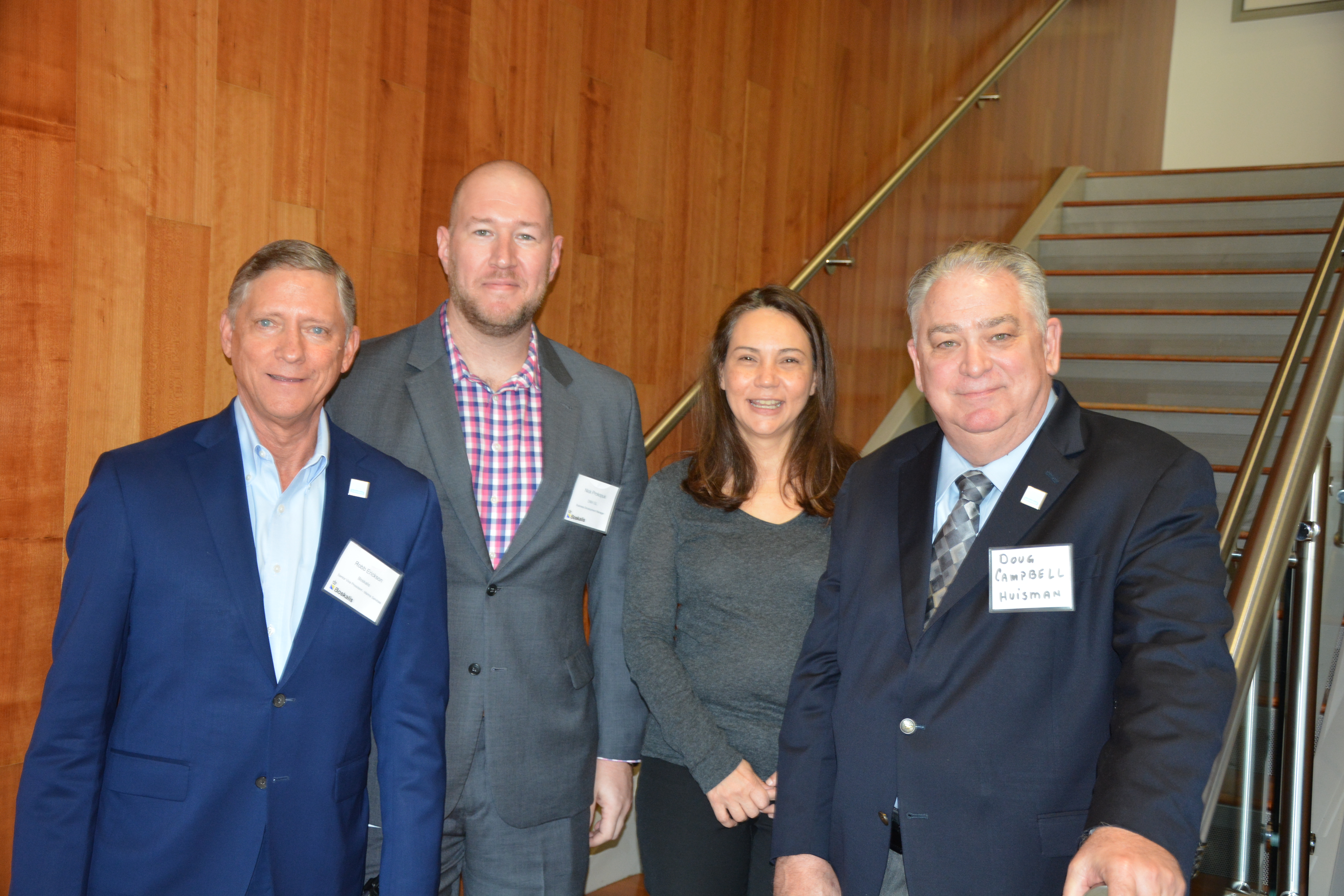DNV GL Holds 4th US Offshore Wind Roundtable Discussion

The U.S. Offshore Wind Roundtable Discussion brings stakeholders together for dialogue on the supply chain capabilities and the present state of the U.S. offshore wind market.
DNV GL welcomed attendees of the fourth U.S. Offshore Wind Roundtable Discussion to the company’s Houston headquarters today. DNV GL, together with other Leadership members of the Business Network for Offshore Wind, Boskalis Offshore Energy, and Huisman-US, hosted more than 100 maritime industry stakeholders for a discussion on the supply chain capabilities and the present state of the U.S. East Coast offshore wind market.
Attendees of the industry-led event were deeply engaged in conversations about the growing opportunities in the market and reducing risks for investments in vessels and ports needed to grow the U.S. offshore wind industry. The meeting featured discussions with a special focus on permitting and how the future project pipeline impacts investment in vessels and the management of the logistics to match the nation's ports’ assets.

Collaboration is the key
The U.S. Offshore Wind Roundtable Discussion was born in 2018 at the time when the growth outlook for the U.S. market was gaining real traction, and it had become clear that offshore wind was poised to become a major contributor to global energy production.
Doug Campbell, Senior Sales Manager of Huisman-US Equipment, and Robb Erickson, Senior Vice President of Marine Services at Boskalis, envisioned manufacturers and service suppliers to the market coming together to collaborate and jointly explore the innovations and trends that would align the industry for future growth and development.
To bring their vision of an industry-led event to life, the pair approached the Business Network for Offshore Wind (BNOW), an organization whose mission is to support the development of offshore wind-generated renewable energy in the U.S. and promote the growth of an offshore wind supply chain.
“This meeting comes at the start of a new decade with enormous potential,” said Liz Burdock, the President & CEO of the Business Network for Offshore Wind as she addressed attendees of the event. “Yet, while there is an expectation for the U.S. market to deploy at least 10 GW over the next decade, there are obstacles that must be overcome for this development to be realized, and this coalition has an important role to play in laying the groundwork for the success of the industry.”
Navigation Risk
Nearly 84% of U.S. domestic water-borne tonnage is transported via barge, which makes tug and tow transportation a critically important part of U.S. commerce. Cheryl Stahl, Senior Principal Consultant at DNV GL, led an examination of the complex issue of balancing historical waterway uses and proposed offshore wind farms along the U.S. east coast.
“Tug and tow vessel traffic transits along the coastline,” said Stahl, “Some of the historic trade routes cross the NY draft offshore wind lease areas. One might suggest shifting the tug traffic east of the leases. However, a shift east would take the vessels into deeper waters and higher winds, which is a potential safety concern.” Stahl highlighted that, while The Bureau of Ocean Energy Management has yet to release the final NY Bight and California wind energy areas, developers that are considering bidding for these lease areas should take care that they consider maritime uses and traffic in and around their lease so that they are not caught in an unexpected situation. “There’s nothing worse than spending hundreds of millions of dollars and then finding out that certain portions of the lease area are going to cause significant issues with the authorities.”
A rewarding outlook
Forecasts predict the offshore wind market globally is expected to increase six-fold over the next decade, with the growth rate of the U.S. market alone forecasted at 200 to 300 times existing levels. “There is no doubt there are risks to the market, but major opportunities are arising across the entire supply chain from installation to maintenance through to crew vessels, and the industry will be better off when these challenges are addressed together,” stated Nick Prokopuk, DNV GL Maritime Business Development Manager leading Offshore Wind segment.
DNV GL is uniquely positioned to deliver industry-leading advisory expertise to help offshore wind projects increase performance at varying stages of the project lifecycle and at every step of the project. “With the dependencies among the different parts of the offshore wind value chain, we believe that success relies on taking a full lifecycle approach to managing risks, reducing costs, and maintaining quality,” said Antony DSouza, Vice President and Regional Manager at DNV GL. “DNV GL is a dominant player in the market, with more than 30 years of experience in offshore wind, and we are committed to utilizing our knowledge to support and facilitate the safe and efficient planning, construction, and management of related projects in this region."

